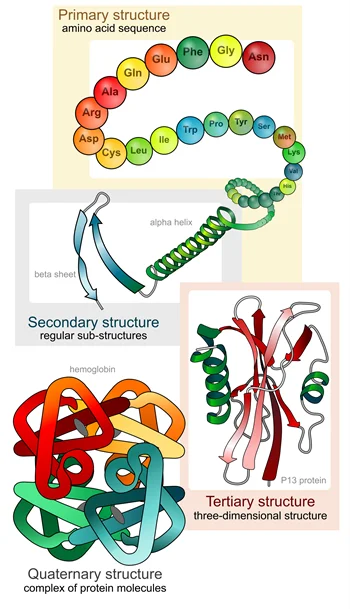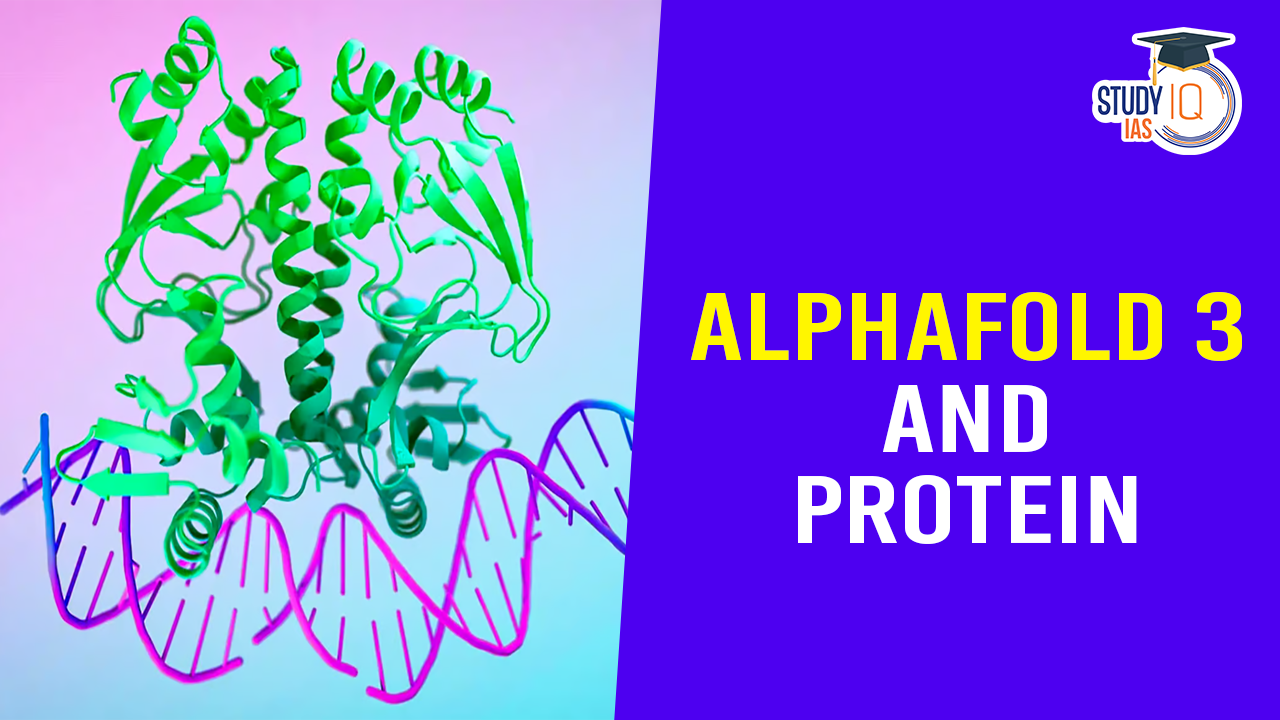Table of Contents
Context: The emergence of AlphaFold, developed by DeepMind, marks a significant milestone in unravelling the mystery of protein folding.
AlphaFold: A Game-Changer in Protein Structure Prediction
- In 2018, DeepMind introduced AlphaFold, a groundbreaking AI tool designed to predict the intricate shapes of proteins with remarkable accuracy.
- Building upon its predecessor, AlphaFold 2 further elevated the precision of protein structure predictions, showcasing the transformative potential of deep learning in structural biology.
- The recent unveiling of AlphaFold 3 heralds a new era in protein structure prediction, boasting an impressive 80% accuracy rate and expanded capabilities to model DNA, RNA, ligands, and modifications.
- By accelerating the process of protein structure prediction from years to mere seconds, AlphaFold has revolutionized human awareness of molecular configurations, paving the way for groundbreaking discoveries in drug development and disease treatment.
Working of AlphaFold 3
- AlphaFold 3 analyzes existing protein structures, identifying patterns and relationships between amino acid sequences (the building blocks of proteins) and their corresponding 3D shapes.
- When presented with a new protein sequence, the program predicts its most likely 3D structure with remarkable accuracy.
Potential Impact
- Drug Discovery: By accurately predicting protein structures, AlphaFold 3 can accelerate the development of new drugs by understanding how they interact with protein targets.
- Personalized Medicine: Predicting individual protein variations can pave the way for personalized treatments tailored to a patient’s specific genetic makeup.
- Materials Science: Understanding protein structures can help design new materials with desired properties, leading to advancements in fields like nanotechnology.
Complexity of Protein Folding
- Protein folding is the physical process by which a protein, after synthesis by a ribosome as a linear chain of amino acids, changes from an unstable random coil into a more ordered three-dimensional structure. This structure permits the protein to become biologically functional.
- Proteins are composed of long chains of amino acids, which spontaneously fold into specific three-dimensional structures.
- Despite the seemingly linear sequence of amino acids, the number of possible configurations for a protein is astronomically vast, presenting a daunting computational challenge.
- The precise folding pathway of a protein is influenced by various factors, including hydrogen bonding, van der Waals forces, and electrostatic interactions.

The Protein-Folding Problem
- The protein-folding problem pertains to the mystery of how a protein navigates through its myriad possible conformations to achieve its native, functional state.
- Understanding the principles governing protein folding is crucial, as misfolded proteins are implicated in a myriad of diseases, including Alzheimer’s, Parkinson’s, and cystic fibrosis.
- Despite decades of research, elucidating the intricacies of protein folding remains a formidable challenge.
Challenges
- While AlphaFold excels in predicting protein structures, the underlying mechanisms driving these configurations remain elusive, underscoring the continued importance of human expertise in structural biology.
- Translating predictive insights into successful clinical outcomes poses significant challenges, particularly in navigating complex drug interactions and physiological responses.
- The limited accessibility of AlphaFold, coupled with its proprietary nature, raises concerns about equitable access to cutting-edge technology and the implications for scientific transparency and public accountability.
| About DeepMind |
Background
How DeepMind Works
|
Way Forward
- DeepMind, as a pioneer in AI-driven protein structure prediction, has a unique opportunity to explore alternative revenue models that ensure widespread access to this transformative technology, while also supporting continued research and development.
- By embracing principles of openness, transparency, and collaboration, the scientific community can harness the full potential of AlphaFold and usher in a new era of discovery and innovation in healthcare and beyond.


 Bharat Bandh 9 July 2025: Over 25 Crore ...
Bharat Bandh 9 July 2025: Over 25 Crore ...
 Sukhoi Su-57: Will India Choose Russia�...
Sukhoi Su-57: Will India Choose Russia�...
 World Bioproduct Day 2025: Date, Theme, ...
World Bioproduct Day 2025: Date, Theme, ...





















